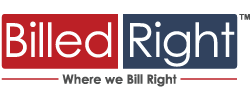Simplifying Audit Tracking and Team Performance in RCM
Importance of Tracking Audit Findings
Tracking audit findings plays a critical role in enhancing the overall efficiency and effectiveness of a medical practice’s revenue cycle. Understanding the significance of this process can lead to substantial improvements in operational performance and financial outcomes.
Enhancing Revenue Cycle Efficiency
A well-structured tracking system for audit findings can significantly enhance revenue cycle efficiency. By systematically documenting the outcomes of audits, healthcare professionals can pinpoint inefficiencies and streamline processes.
The following table illustrates key benefits of tracking audit findings in relation to revenue cycle management:
| Benefit | Description |
|---|---|
| Increased Revenue | By addressing identified issues, practices can improve their collections and reduce write-offs. |
| Reduced Denials | Tracking common errors can lead to strategies that decrease claim denials. |
| Time Savings | Streamlined processes mean less time spent on rework and more focus on patient care. |
| Better Compliance | Regular tracking supports adherence to regulations and standards, enhancing overall compliance. |
Improving these key areas can foster more efficient operations, ultimately leading to better patient satisfaction and practice sustainability.
Identifying Areas for Improvement
Tracking audit findings not only supports efficiency but also assists in identifying areas for improvement within the practice. By analyzing the data generated from audits, healthcare professionals can discern patterns and trends that signal where resources and attention are needed.
The following table highlights common areas of improvement identified through audit tracking:
| Area | Key Findings |
|---|---|
| Coding Accuracy | Documentation may reveal frequent mistakes. |
| Staff Training | Audits can indicate gaps in staff knowledge, prompting further training investments. |
| Documentation Quality | Inadequate documentation often leads to errors. Learn about the role of documentation in coding audits for best practices. |
| Efficiency of Billing Processes | Tracking outcomes helps identify bottlenecks in billing, leading to actionable improvement strategies. |
By consistently tracking audit findings, healthcare professionals can create a culture of continuous improvement within their practice, enhancing both operational and financial performance. The insights gained through this process are essential for optimizing revenue cycle management.
Simplifying Audit Tracking and Improvement Process
Tracking audit findings and improvements is vital for enhancing the efficiency of medical practice management. To streamline this process, several strategies can be implemented to establish clear documentation protocols and actionable solutions.
Establishing Clear Documentation Protocols
A well-defined documentation protocol is essential for accurately recording audit findings and implementing improvements. This ensures that all team members understand their responsibilities and the necessary steps to follow.
Key elements of an effective documentation protocol include:
- Standardized Formats: Use consistent templates for documenting audit findings. This simplifies the process of reviewing and analyzing results.
- Categorization: Organize findings into clear categories, such as coding errors, compliance issues, and areas for improvement. This aids in identifying trends and common problems.
- Version Control: Maintain a system for version control, allowing teams to track changes over time and refer back to previous audit records when necessary.
The following table provides a sample of standardized categories that might be used in documentation:
| Category | Example Findings | Potential Improvements |
|---|---|---|
| Coding Errors | Incorrect code assignments | Staff training on coding updates |
| Compliance Issues | Missing documentation | Implement checklist protocols |
| Denials | High denial rates | Review billing practices |
Implementing Actionable Solutions
Once audit findings have been documented, it’s important to transform them into actionable solutions. This process involves analyzing the data to identify patterns and then developing strategies that can enhance coding accuracy and reduce errors.
Some actionable solutions include:
- Regular Training: Hold training sessions focused on common coding errors and coding quality control best practices to ensure staff are updated with the latest information.
- Auditor Collaboration: Encourage collaboration between auditors and coding staff. This helps in identifying root causes of recurring issues and developing suitable corrective actions. Understanding the role of auditors in medical coding can provide deeper insights into this collaboration.
- Feedback Mechanisms: Establish channels for staff to offer feedback on the audit processes. This allows for continuous improvement and refinement of practices based on firsthand experiences.
To visualize improvement outcomes, it might be useful to track key performance indicators (KPIs) such as accuracy rates and denial rates before and after implementing these solutions.
| KPI | Before Implementation | After Implementation |
|---|---|---|
| Coding Accuracy Rate | 75% | 90% |
| Denial Rate | 20% | 10% |
This structured approach empowers healthcare professionals to efficiently track audit findings and improvements, ultimately leading to optimized revenue cycle management.







